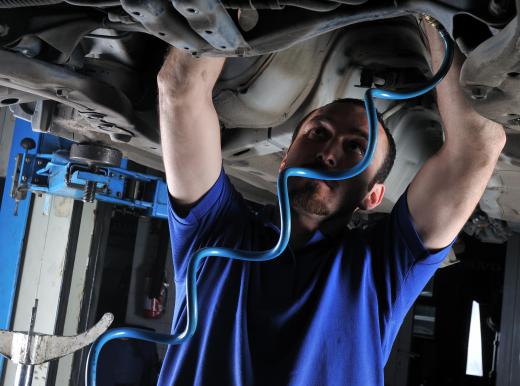A booster compressor is a type of compressor made to boost pressure in a system, typically by four to six times the normal pressure produced by machines in factories. Most factories that need a booster compressor only use this temporarily, because sustaining such high pressure can be difficult and costly. While this can be used to work a device, it more often is used for tests. Most of these compressors are pneumatic, or use air, but some have other power sources.
Factories are where most booster compressor devices are found, because few consumers need the high pressure and power these compressors can offer. Factories' machines commonly are equipped to output about 100 pounds of pressure per square inch (PSI) (6.89 bars), which is enough to run most devices, but not enough for some other uses. When a higher PSI is required, these boosters are used, and they commonly can output from 400 to 600 PSI (27.57 to 41.36 bars).

Most factories are capable of boosting their own PSI without needing a booster compressor, but there are problems with this. A boost in PSI often requires a lot of work to power up the equipment, and it costs much more to sustain the extra pressure. This means this type of compressor makes it much easier to produce and sustain higher-than-average pressures. While this drives down power costs, this compressor is still commonly used on a temporary basis, because power costs can rise if this compressor is on too long.
If a device, such as a nail gun or refrigerator, needs high pressure to work, then a booster compressor can be used. At the same time, most devices do not require the high pressure this type of compressor can make, and the high pressure may be detrimental in terms of functionality; for example, a nail from a nail gun may shoot a hole through the wall instead of simply being driven into the wall. For this reason, a booster compressor is more often used to test presses, pneumatic lifts and other devices based on pressure. Fittings and clamps that need to hold tight at certain pressures also will be tested through this compressor.
The most common type of booster compressor is pneumatic, because this is generally easy to use and only a relatively small amount of energy is needed. Other common sources of power for this type of compressor include electric, diesel and nitrogen. The other sources tend to use more power, and they usually need other resources, so they are not as common as pneumatic systems.
